Blockchain Sharding Scalability Calculator
Calculate how sharding can dramatically increase your blockchain's transaction processing capacity. Enter your current transaction volume and number of shards to see potential throughput improvements.
Results
Enter your current TPS and number of shards to see potential throughput improvements.
Note: This is a simplified calculation. Actual throughput depends on many factors including network efficiency, cross-shard communication latency, and transaction complexity.
Imagine a highway that gets jammed every time a car tries to enter. That’s what most blockchains felt like before sharding. Every single transaction had to be checked by every node. As more people used Bitcoin or Ethereum, confirmation times dragged on, fees spiked, and the network choked. Sharding changed that. Instead of one long, crowded road, it splits the highway into parallel lanes-each handling its own traffic. This isn’t theory anymore. Ethereum 2.0 is already using it. But it’s not magic. There are real trade-offs.
How Sharding Boosts Speed and Scalability
Traditional blockchains like Bitcoin or early Ethereum process transactions one after another. Each node validates every single one. That’s secure, but slow. Sharding breaks the network into smaller groups called shards. Each shard processes its own set of transactions independently. Think of it like having 10 checkout lines at a grocery store instead of one. Suddenly, you can handle 10x the customers without adding more staff to each line. This parallel processing means transaction throughput jumps dramatically. Ethereum’s mainnet used to handle around 15 transactions per second. With full sharding, estimates suggest it could reach over 100,000. That’s not a small upgrade-it’s a complete rethinking of capacity. Apps like decentralized exchanges, NFT marketplaces, and gaming platforms need this speed. Without it, they’re unusable at scale. Sharding also reduces the load on individual nodes. You no longer need a powerful computer to run a full node. Instead, your device only needs to track its assigned shard. This makes it easier for regular users to participate. More participants mean a more decentralized, resilient network. It’s a win for both performance and accessibility.Lower Energy Use and Better Security
Because nodes aren’t processing the entire blockchain anymore, energy consumption drops significantly. Less computation = less electricity. This matters. Critics have long pointed to Bitcoin’s carbon footprint as a flaw. Sharding helps blockchains shed that stigma. Ethereum’s move to proof-of-stake already cut its energy use by 99.95%. Sharding builds on that, making the system even leaner. Security works differently too. Instead of one giant target, attackers now face many smaller ones. Each shard has its own set of validators. If someone tries to compromise a shard, they’d need to control a large portion of that shard’s validators-not the whole network. Random validator assignment makes this harder. Attackers can’t predict which shard they’ll be assigned to, so they can’t concentrate their resources. There’s also a containment effect. If one shard gets attacked, the damage usually stays there. The rest of the network keeps running. That’s a big improvement over older systems where a single exploit could bring everything down.The Hidden Complexity: Cross-Shard Communication
Here’s where things get messy. What happens when a user sends tokens from Shard A to Shard B? That’s a cross-shard transaction. It’s not as simple as transferring money between two bank accounts. The two shards must communicate securely, verify the transaction, and update each other’s ledgers without letting anyone cheat. This requires complex protocols. One common method is using cryptographic receipts-proofs that a transaction happened in one shard and must be honored in another. But these proofs take time to generate and verify. They add latency. If you’re trying to buy an NFT in a fast-paced auction, a 10-second delay because of cross-shard sync can ruin the experience. Double-spending is a real risk here. Imagine someone tries to spend the same ETH on two different shards at the same time. The system must catch that. It’s not impossible, but it demands careful design. Protocols like the Beacon Chain in Ethereum 2.0 act as a central coordinator, tracking shard states and validating cross-shard proofs. But that introduces a new dependency. Is the Beacon Chain a single point of failure? Some critics say yes.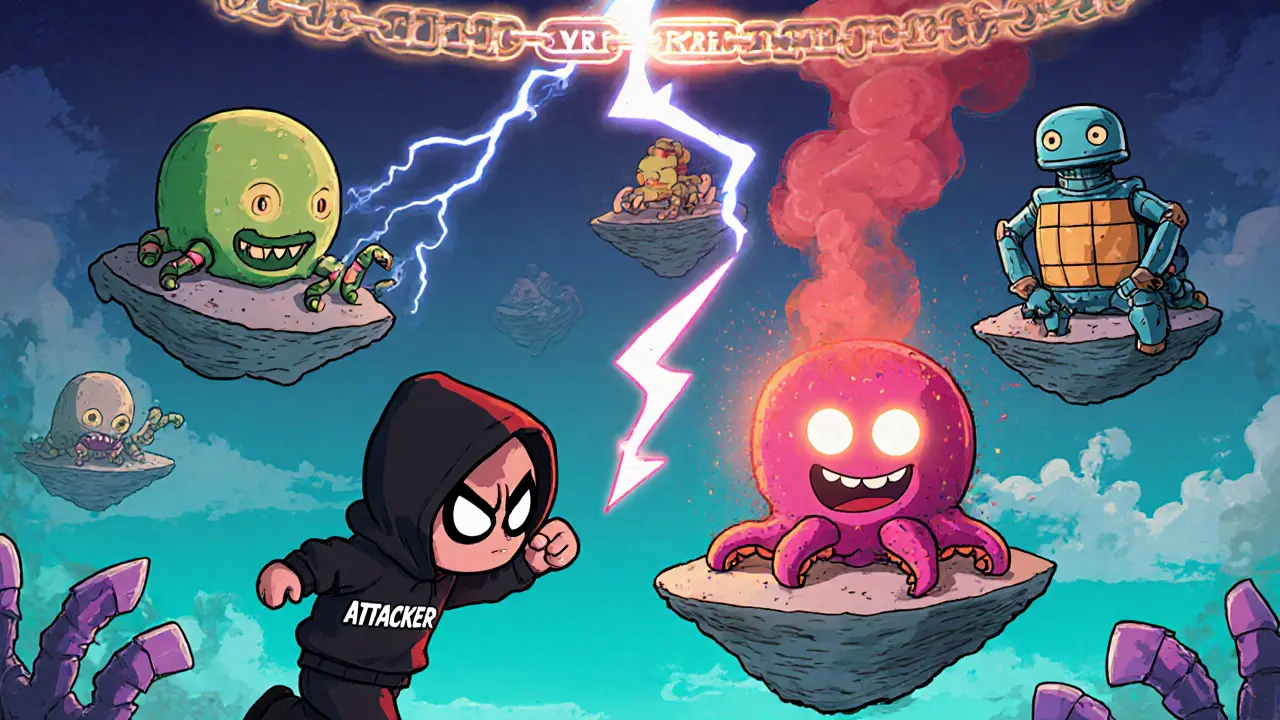
Single Shard Takeover Attacks: The Achilles’ Heel
Sharding reduces the cost of attacking the network-but that’s a double-edged sword. In a non-sharded chain, you’d need 51% of the total hashing power to take over. In a sharded system, you only need 51% of one shard’s validators. That’s a tiny fraction of the whole network. This is called a single shard takeover attack. An attacker with just 1% of the total stake could theoretically control a shard if validator assignment isn’t random enough or if the shard is too small. That’s why shard size matters. Most experts agree that shards need at least a few hundred validators to be secure. Ethereum’s current design uses shards with 1,000+ validators each. That’s a good start. Randomness is critical. Validator assignment must be unpredictable and verifiable. If an attacker can predict which shard they’ll join, they can plan their attack. Techniques like Verifiable Random Functions (VRFs) help here. They generate random numbers that can’t be manipulated-even by miners or validators.Data Availability and Network Fragmentation
When data is split across shards, how do you know it’s still there? What if a shard’s validators go offline or refuse to share data? That’s a data availability problem. If a shard doesn’t publish its transaction data, other shards can’t verify cross-shard transfers. The whole network could grind to a halt. Solutions like data availability sampling (DAS) help. Nodes don’t download every piece of data. Instead, they randomly sample small chunks. If enough samples are valid, they assume the full dataset is intact. This keeps bandwidth low while preserving trust. But it’s not foolproof. If too many samples are corrupted, the system could be fooled. Then there’s fragmentation. If shards become isolated-maybe due to network partitions or misconfigurations-they might stop communicating. Users on Shard 3 might not be able to interact with users on Shard 7. That breaks the promise of a unified blockchain. It turns one system into ten mini-blockchains. That’s the opposite of what sharding is meant to achieve.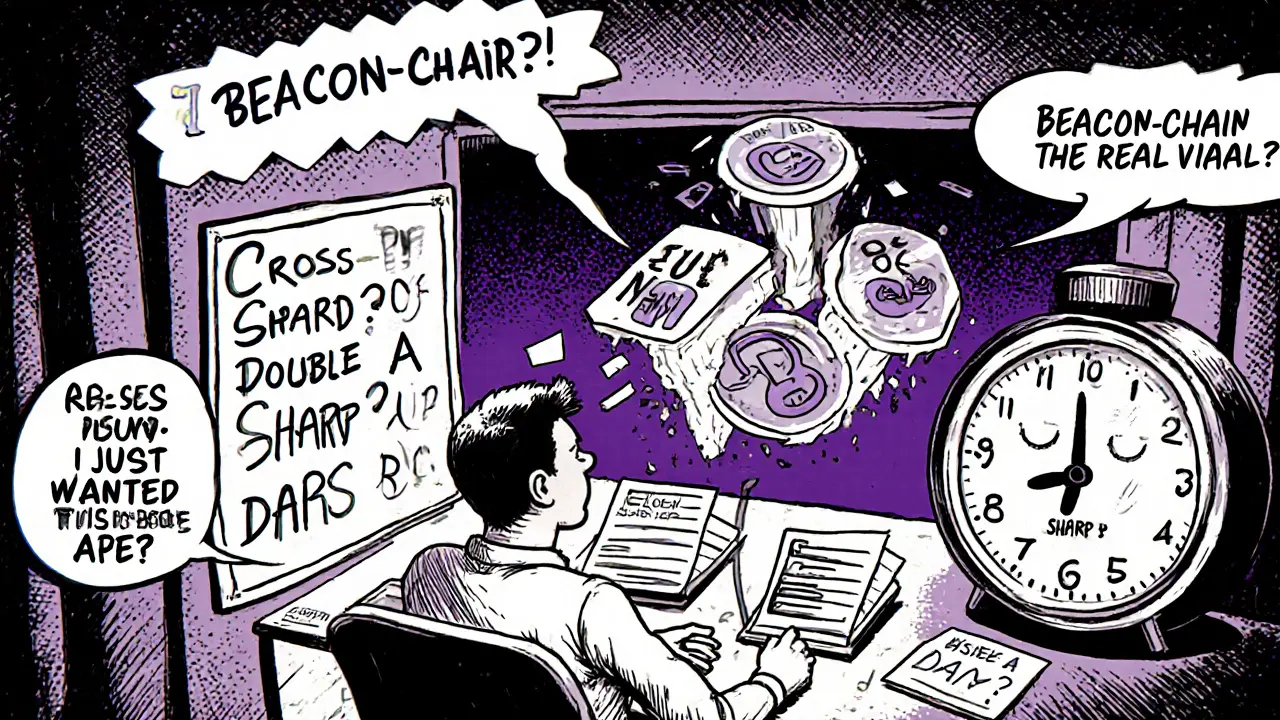
Implementation Barriers and Developer Challenges
Building a sharded blockchain isn’t like adding a plugin. It requires deep expertise in distributed systems, cryptography, and consensus algorithms. Most teams lack the resources to do it right. That’s why only a few major projects-Ethereum, Zilliqa, Near Protocol-have implemented it at scale. Even then, the learning curve is steep. Developers must understand how shards sync, how cross-shard messages are validated, and how to handle edge cases. Tools and documentation are still evolving. Many smart contracts written for single-chain blockchains won’t work on sharded ones without major rewrites. Interoperability is another headache. If you have sharded blockchains from different projects-say, Ethereum and Near-how do they talk to each other? Cross-chain bridges are risky. They’ve been hacked repeatedly. True cross-shard communication between different protocols is still in early research.What’s Next for Sharding?
The future of sharding isn’t about more shards-it’s about smarter ones. Projects are working on dynamic shard sizing, where the number of shards adjusts based on network demand. Others are building layer-2 solutions on top of sharded chains to handle even more transactions without overloading the base layer. Ethereum’s Proto-Dank Sharding is a step in the right direction. It’s a simplified version that lays the groundwork without waiting for full sharding. It introduces data blobs and a new fee market that makes scaling smoother. This shows that progress doesn’t have to be all-or-nothing. The real test will be adoption. Can dApps build on sharded chains without users noticing the complexity? Can wallets handle cross-shard transactions as easily as sending ETH today? If yes, sharding will become invisible-just part of how blockchains work. If not, it’ll remain a behind-the-scenes fix for engineers, not a user-friendly upgrade.Is Sharding Worth It?
Yes-but only if done right. The benefits are undeniable: faster transactions, lower costs, less energy, and broader participation. But the risks are real. A poorly designed shard system can be less secure than a simple, single-chain blockchain. The key is balance. Too many shards? Vulnerable to takeover attacks. Too few? No real scalability gain. Too little randomness? Predictable, exploitable. Too much complexity? Developers give up. Sharding isn’t the endgame. It’s a necessary step. As blockchain moves from niche experiments to everyday tools-paying bills, buying groceries, verifying supply chains-it needs to scale without sacrificing its core values. Sharding is one of the few paths that lets us do that.What is blockchain sharding?
Blockchain sharding is a scaling technique that splits a blockchain network into smaller groups called shards. Each shard processes its own transactions independently, allowing the network to handle many transactions at once instead of one after another. This increases speed and capacity without requiring every node to validate every transaction.
Does sharding make blockchains less secure?
It can, if not implemented carefully. Sharding reduces the number of validators needed to control a single shard, making it easier for attackers to target one shard. But good designs use random validator assignment, large shard sizes, and cryptographic proofs to prevent this. Ethereum 2.0, for example, uses over 1,000 validators per shard to make attacks impractical.
How does sharding reduce energy use?
Sharding reduces energy use because nodes only process transactions for their assigned shard, not the entire network. This means less computational work per node, which directly lowers electricity consumption. Combined with proof-of-stake consensus, sharding makes blockchains far more energy-efficient than older proof-of-work systems.
Can I send crypto from one shard to another?
Yes, but it’s more complex than sending within the same shard. Cross-shard transactions require special protocols to verify and confirm the transfer between shards. These involve cryptographic proofs and coordination mechanisms to prevent double-spending. While functional, they add slight delays compared to intra-shard transfers.
Which blockchains use sharding today?
Ethereum 2.0 is the most well-known example, using a phased approach with Proto-Dank Sharding as a stepping stone. Zilliqa was one of the first to implement sharding in 2019. Near Protocol and Polkadot also use shard-like structures called parachains. These projects are actively improving cross-shard communication and security.
Do I need special hardware to run a node on a sharded blockchain?
No. One of the biggest advantages of sharding is that it lowers hardware requirements. Since nodes only handle their assigned shard, you don’t need a powerful machine to participate. A standard laptop or even a Raspberry Pi can run a node in many sharded networks, making decentralization more accessible.
What’s the biggest challenge with sharding?
The biggest challenge is ensuring secure and efficient cross-shard communication. Without it, shards become isolated islands. Getting transactions to move safely between shards without delays, errors, or double-spending risks requires complex, battle-tested protocols-and we’re still refining them.
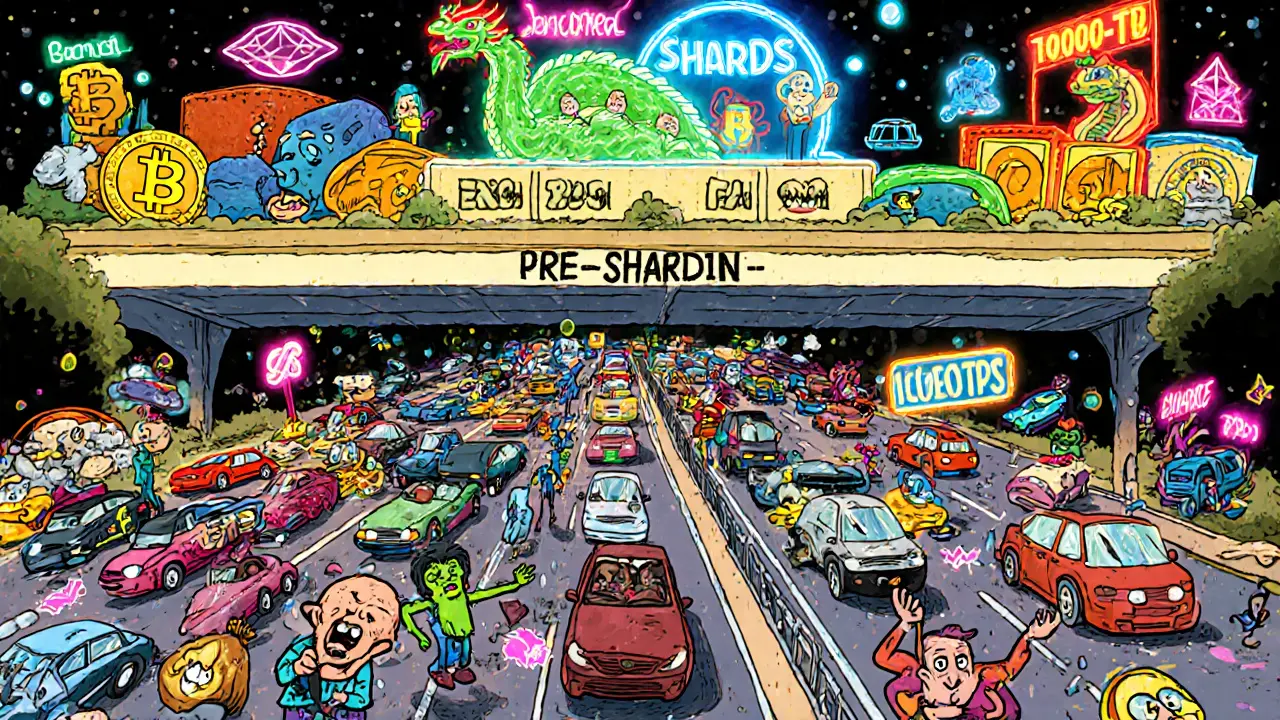


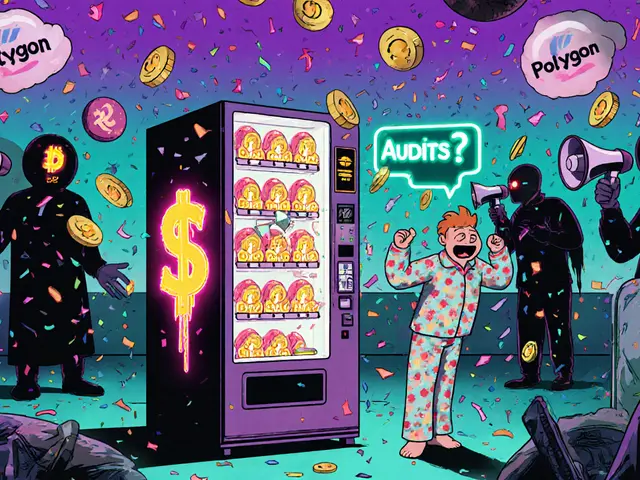
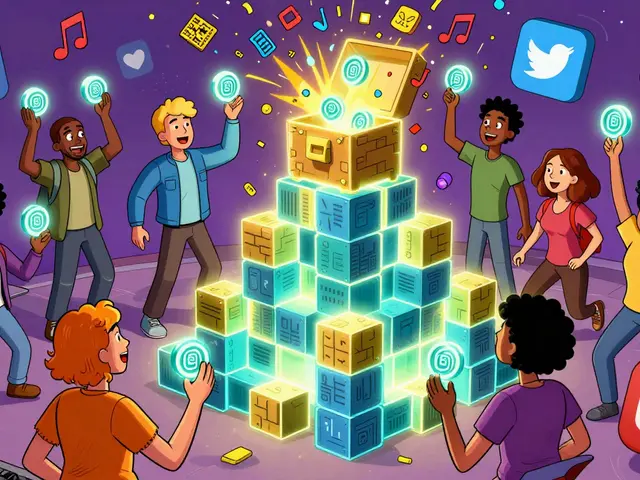
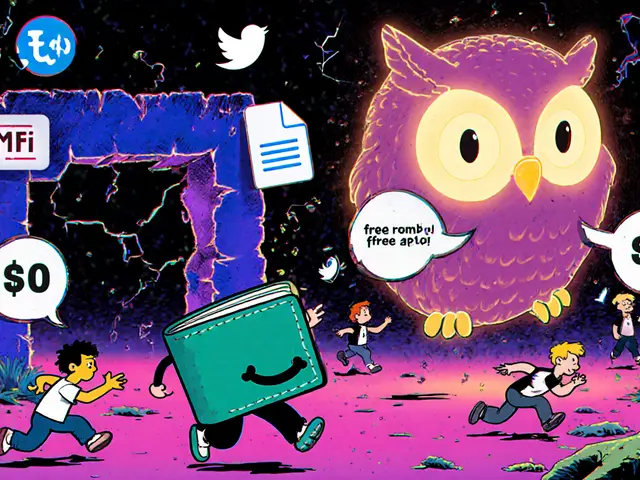
Brian Gillespie
Sharding’s the only way forward. No debate.